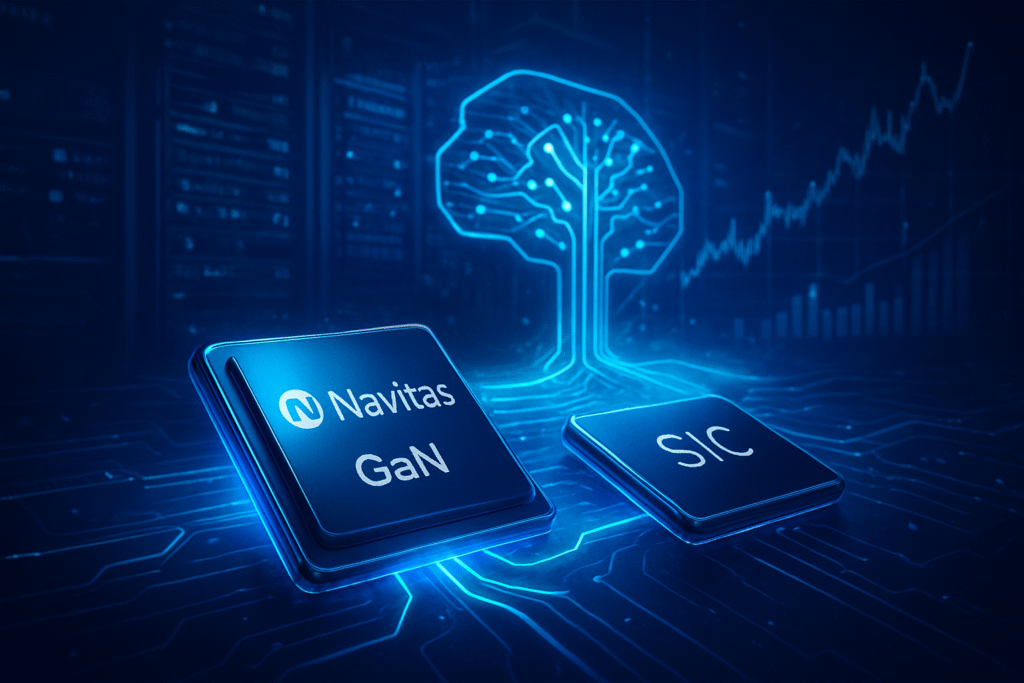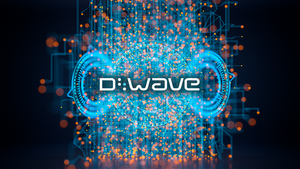
Navitas Semiconductor (NASDAQ: NVTS), a prominent player in gallium nitride (GaN) and silicon carbide (SiC) power semiconductors, has been under the spotlight not just for its technological advancements but also for significant activity from its selling stockholders. While the company aggressively pursues expansion into high-growth markets like AI data centers, a series of stock offerings by existing shareholders and notable insider sales have prompted investors to scrutinize the implications for Navitas's valuation and future trajectory within the highly competitive AI and semiconductor industry.
This trend of selling stockholder activity, particularly observed in mid-2025, comes at a crucial juncture for Navitas. As the company navigates a strategic pivot towards higher-power, higher-margin opportunities, the divestment of shares by insiders and early investors presents a complex signal. It forces a closer look at whether these sales reflect profit-taking after significant stock appreciation, a lack of confidence in near-term prospects, or simply routine portfolio management, all while the broader market keenly watches Navitas's ability to capitalize on the burgeoning demand for efficient power solutions in the AI era.
Unpacking the Selling Spree: Details and Market Reaction
The activity from selling stockholders at Navitas Semiconductor is multifaceted, stemming from various points in the company's journey. A significant mechanism for these sales has been the resale registration statements, initially filed in November 2021 and updated in December 2023, which allow a substantial number of shares (over 87 million Class A common stock and warrants) held by early investors and those from the GeneSiC acquisition to be sold into the public market over time. While not a direct capital raise for Navitas, these registrations provide liquidity for existing holders, potentially increasing the float and creating downward pressure on the stock price depending on market demand.
More specifically, the period leading up to and including mid-2025 saw notable insider selling. For instance, Director Brian Long had a planned sale of 500,000 shares of Class A Common Stock on August 27, 2025, following previous substantial sales totaling approximately 4.49 million shares, generating $31.85 million. This individual action, while not a corporate offering, is significant as it signals the sentiment of a key company figure. Furthermore, around June 16, 2025, following an announcement of a collaboration with NVIDIA (NASDAQ: NVDA) that initially sent Navitas's stock soaring, insiders collectively sold approximately 15 million NVTS shares, representing about a quarter of their beneficial interest, at an average price of around $6.50. This surge in selling after positive news can be interpreted as insiders capitalizing on a price spike, potentially raising questions about their long-term conviction or simply reflecting strategic portfolio rebalancing.
These selling activities contrast with the company's own efforts to raise capital. For example, in November 2025, Navitas undertook a private placement to raise $100 million for working capital and its "Navitas 2.0" transformation, specifically targeting AI data centers and other high-power markets. This distinction is crucial: while the company is raising funds for growth, existing shareholders are simultaneously divesting. The market's reaction to this confluence of events has been mixed. Navitas's stock experienced a significant plunge of 21.7% following its Q3 2025 results, attributed to sluggish performance and a tepid outlook, despite being up 170.3% year-to-date as of November 11, 2025. The insider selling, particularly after positive news, often contributes to market apprehension and can be seen as a potential red flag, even if the company's underlying technology and market strategy remain promising.
Competitive Implications in the AI and Semiconductor Arena
The ongoing selling activity by Navitas's stockholders, juxtaposed with the company's strategic pivot, carries significant competitive implications within the AI and semiconductor industry. Navitas (NASDAQ: NVTS), with its focus on GaN and SiC power ICs, is positioned to benefit from the increasing demand for energy-efficient power conversion in AI data centers, electric vehicles, and renewable energy infrastructure. The collaboration with NVIDIA, for example, highlights the critical role Navitas's technology could play in improving power delivery for AI accelerators, a segment experiencing explosive growth.
However, the consistent insider selling, particularly after positive news or during periods of stock appreciation, could impact investor confidence and, by extension, the company's ability to attract and retain capital. In a sector where massive R&D investments and rapid innovation are key, a perceived lack of long-term conviction from early investors or insiders could make it harder for Navitas to compete with tech giants like Infineon (ETR: IFX, OTCQX: IFNNY), STMicroelectronics (NYSE: STM), and Wolfspeed (NYSE: WOLF), which also have strong positions in power semiconductors. These larger players possess deeper pockets and broader market reach, allowing them to weather market fluctuations and invest heavily in next-generation technologies.
For AI companies and tech giants relying on advanced power solutions, Navitas's continued innovation in GaN and SiC is a positive. However, the financial signals from its selling stockholders could introduce an element of uncertainty regarding the company's stability or future growth trajectory. Startups in the power semiconductor space might view this as both a cautionary tale and an opportunity: demonstrating strong insider confidence can be a crucial differentiator when competing for funding and market share. The market positioning of Navitas hinges not only on its superior technology but also on the perception of its long-term financial health and investor alignment, which can be swayed by significant selling pressure from its own stakeholders.
Broader Significance: Navitas's Role in the Evolving AI Landscape
The dynamics surrounding Navitas Semiconductor's (NASDAQ: NVTS) stock offerings by selling stockholders are more than just a corporate finance event; they offer a lens into the broader trends and challenges shaping the AI and semiconductor landscape. As AI workloads become more demanding, the need for highly efficient power delivery systems grows exponentially. Navitas's GaN and SiC technologies are at the forefront of addressing this demand, promising smaller, lighter, and more energy-efficient power solutions crucial for AI data centers, which are massive energy consumers.
The insider selling, while potentially a routine part of a public company's lifecycle, can also be viewed in the context of market exuberance and subsequent recalibration. The semiconductor industry, particularly those segments tied to AI, has seen significant valuation spikes. Selling by early investors or insiders might reflect a pragmatic approach to lock in gains, especially when valuation metrics suggest a stock might be overvalued, as was the case for Navitas around November 2025 with a P/S ratio of 30.04. This behavior highlights the inherent tension between long-term strategic growth and short-term market opportunities for stakeholders.
Impacts of such selling can include increased stock volatility and a potential dampening of investor enthusiasm, even when the company's technological prospects remain strong. It can also raise questions about the internal outlook on future growth, especially if the selling is not offset by new insider purchases. Comparisons to previous AI milestones reveal that periods of rapid technological advancement are often accompanied by significant capital movements, both into and out of promising ventures. While Navitas's technology is undoubtedly critical for the future of AI, the selling stockholder activity serves as a reminder that market confidence is a complex interplay of innovation, financial performance, and stakeholder behavior.
Charting the Course Ahead: Future Developments and Challenges
Looking ahead, Navitas Semiconductor (NASDAQ: NVTS) is firmly focused on its "Navitas 2.0" strategy, which aims to accelerate its momentum into higher-power markets such as AI data centers, performance computing, energy and grid infrastructure, and industrial electrification. This strategic pivot is critical for the company's long-term growth, moving beyond its initial success in mobile fast chargers to address more lucrative and demanding applications. The recent $100 million private placement in November 2025 underscores the company's commitment to funding this expansion, particularly its efforts to integrate its GaN and SiC power ICs into the complex power delivery systems required by advanced AI processors and data center infrastructure.
Expected near-term developments include further product introductions tailored for high-power applications and continued collaborations with leading players in the AI and data center ecosystem, similar to its partnership with NVIDIA. Long-term, Navitas aims to establish itself as a dominant provider of next-generation power semiconductors, leveraging its proprietary technology to offer superior efficiency and power density compared to traditional silicon-based solutions. The company's success will hinge on its ability to execute this strategy effectively, converting technological superiority into market share and sustained profitability.
However, several challenges need to be addressed. The competitive landscape is intense, with established semiconductor giants continually innovating. Navitas must demonstrate consistent financial performance and a clear path to profitability, especially given its recent Q3 2025 results and outlook. The ongoing insider selling could also pose a challenge to investor sentiment if it continues without clear justification or is perceived as a lack of confidence. Experts predict that the demand for efficient power solutions in AI will only grow, creating a vast opportunity for companies like Navitas. However, to fully capitalize on this, Navitas will need to manage its capital structure prudently, maintain strong investor relations, and consistently deliver on its technological promises, all while navigating the volatile market dynamics influenced by stakeholder actions.
A Critical Juncture: Navitas's Path Forward
The recent activity surrounding Navitas Semiconductor's (NASDAQ: NVTS) Class A common stock offerings by selling stockholders represents a critical juncture for the company and its perception within the AI and semiconductor industries. While Navitas stands on the cusp of significant technological breakthroughs with its GaN and SiC power ICs, crucial for the energy demands of the AI revolution, the consistent selling pressure from insiders and early investors introduces a layer of complexity to its narrative. The key takeaway for investors is the need to differentiate between the company's strategic vision and the individual financial decisions of its stakeholders.
This development holds significant importance in AI history as it underscores the financial realities and investor behavior that accompany rapid technological advancements. As companies like Navitas seek to enable the next generation of AI, their market valuations and capital structures become just as important as their technological prowess. The selling activity, whether for profit-taking or other reasons, serves as a reminder that even in the most promising sectors, market sentiment and stakeholder confidence are fluid and can influence a company's trajectory.
In the coming weeks and months, investors should closely watch Navitas's execution of its "Navitas 2.0" strategy, particularly its progress in securing design wins and revenue growth in the AI data center and high-power markets. Monitoring future insider trading activity, alongside the company's financial results and guidance, will be crucial. The ability of Navitas to effectively communicate its long-term value proposition and demonstrate consistent progress will be key to overcoming any lingering skepticism fueled by recent selling stockholder activity and solidifying its position as a leader in the indispensable power semiconductor market for AI.
This content is intended for informational purposes only and represents analysis of current AI developments.
TokenRing AI delivers enterprise-grade solutions for multi-agent AI workflow orchestration, AI-powered development tools, and seamless remote collaboration platforms.
For more information, visit https://www.tokenring.ai/.





